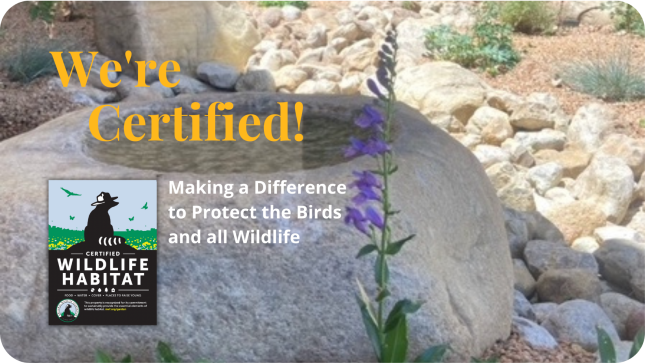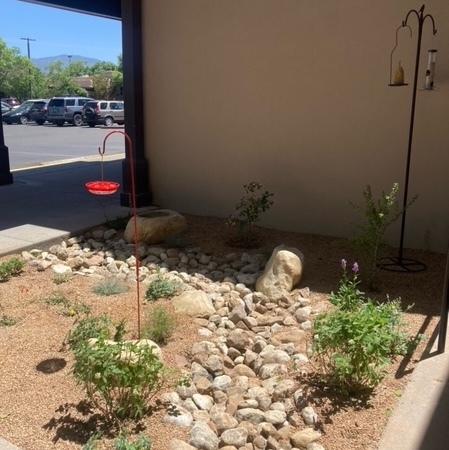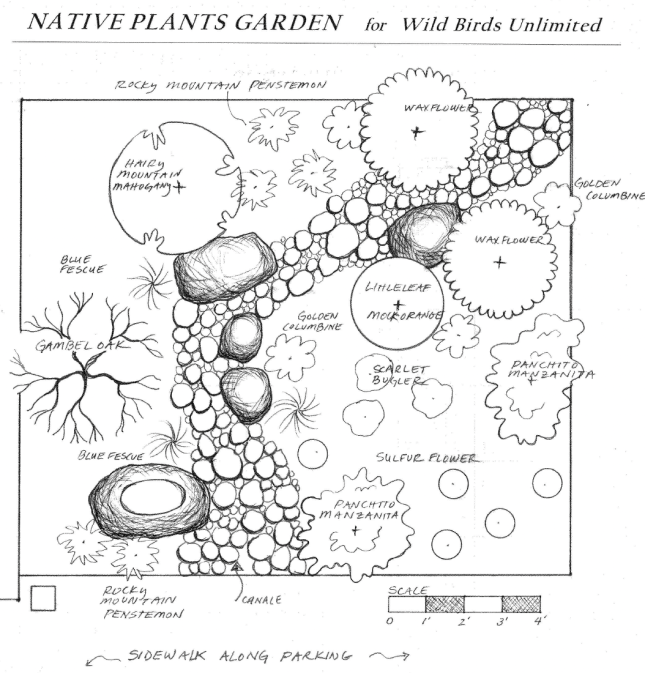
National Wildlife Federation Certifies
Wild Birds Unlimited of Santa Fe's Garden Courtyard
Making a Difference to Protect the Birds and All Wildlife
We're proud to have successfully created a Certified Wildlife Habitat® through the National Wildlife Federation's Garden for Wildlife™ program. The small side area next to the store was unattended and just waiting for the help of a green thumb. After we planted many native plants, added a birdbath, and rocks, and installed a WBU Advanced Pole System and bird feeders, we're starting to see birds visit that we hadn't seen before. Our garden courtyard is new, and we can't wait to watch it bloom and see what the next season brings!
Here's a complete list of the native plants we used in the garden (Latin name followed by common name):
Shrubs
Arctostaphylos x Panchito, Panchito Manzanita
Cercocarpus brevifolius, Hairy Mountain Mahogany
Jamesia americana, Waxflower
Philadelphus microphyllus, Littleleaf Mock Orange
Quercus gambelii, Gambel Oak
Perennials
Aquilegia chrysantha, Golden Columbine
Eriogonum umbellatum, Sulphur Flower
Festuca idahoensis Siskiyou, Blue Fescue Grass
Penstemon barbatus, Scarlet Bugler
Penstemon strictus, Rocky Mountain Penstemon
NWF celebrates this effort to create a garden that supports birds, butterflies, bees, frogs and other local wildlife. Every Certified Wildlife Habitat garden provides natural sources of food, water, cover and places to raise young and is maintained in a sustainable way that incorporates native plants, conserves water and doesn’t rely on pesticides. Celebrating over 45 years, the Garden for Wildlife movement has recognized over 227,000 Certified Wildlife Habitat gardens across the United States to date, encompassing more than 2.5 million acres that support wildlife locally. Backyards, urban gardens, school grounds, businesses, places of worship, campuses, parks, farms, zoos and community landscapes can all be recognized as wildlife habitats through the program.
Celebrating over 45 years, the Garden for Wildlife movement has recognized over 227,000 Certified Wildlife Habitat gardens across the United States to date, encompassing more than 2.5 million acres that support wildlife locally. Backyards, urban gardens, school grounds, businesses, places of worship, campuses, parks, farms, zoos and community landscapes can all be recognized as wildlife habitats through the program.
“Anyone, anywhere can restore wildlife habitat right in their own yards and communities,” said NWF naturalist David Mizejewski. “Whether you garden in a suburban yard, an urban area or a rural plot of land, you can make a difference for local wildlife. Creating a Certified Wildlife Habitat garden is fun, easy and makes a real difference for neighborhood wildlife. It’s the perfect grassroots way to think globally and act locally and help birds, butterflies, bees and other wildlife,” he added.
You can make a difference in your own backyard and become certified too! Just ask us how at the store or learn more at NWF.org.



